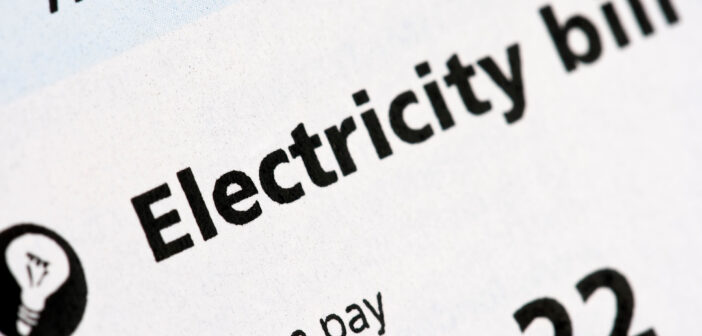Cutting Costs by Reducing the Power Bill
by Adam Pratt, Arcade Galactic & ArcadeHeroes.com
Rising expenses have been the bane of our existence for the past few years and while you adapt as best you can, it’s hard not to pine for the good ol’ days when a single combo meal cost you five bucks instead of $20.
One thing I like about operating video games is that they simplify my operations. For example, I don’t usually need to keep them stocked with product unless we’re talking about a card-vending game like Minecraft Dungeons Arcade. Of course, most in this industry operate redemption and you definitely need to keep the product flowing. But, regardless of type of machine we’re talking about (except the bulk of bulk venders), we all have one expense to grapple with: the power bill.
As an example, in 2022 when the energy crisis began picking up steam, certain regions of the world were slammed with skyrocketing electricity costs. Several operators in the U.K. and Japan were looking at annual electric bills climbing into the hundreds of thousands with some locations reporting rates in the £200,000 to £300,000 range. (Note: They have a yearly billing system there. I’m not sure if anywhere in the U.S. has something like that). This was a significant increase over where they had been and for many, the additional cost held the prospect of them having to close.
Now, energy bills do appear to have stabilized , but I’m sure this has been an issue at the forefront of everyone’s minds. I admit I’ve been practicing energy-saving principles for several years because I believe it doesn’t hurt to save where I don’t need to waste. For the record, my arcade’s energy bill seems to bounce between $400 to $600 per month. (I have a little over 60 games.) The A/C tends to be the biggest power driver, and unfortunately, the mall I’m in recently took control of that, dictating when it’s on or off. This has caused the bill to tick up over $100 per month since they did that. If left up to me, I’d have it on only when customers were around or when it just became too hot.
A/C aside, there’s the “low-hanging fruit,” the lights. I’ve never been big on flooding my arcade with light. I get that it can be more inviting when well-lit, it also tends to get in the way of the user experience since many lights end up reflecting into the screens. It’s not a positive experience when you have to dodge light bulb reflections on the screen while you’re trying to play.
I’ve used targeted LED track lights for this and I would love to employ some additional LED strip lighting in my ceiling, similar to what I’ve seen in some Asian locations. But using flood lights from fluorescents is a no-go! While there are LED tubes you can install, I opt not to use that kind of lighting at all.
As for the games themselves, all modern pieces already use LED lighting. But, since I have a bunch of games from the ’80s and the ’90s, I’ve taken the time to swap those old incandescents for LEDs. It’s hard to say how much impact that makes but I figure every bit helps. The same goes for my pinball machines. Fortunately, “modders” have created some great LED packages that maintain the “warm” look retro pinball fans crave. Swapping lights out in those older games seems sensible to me and I haven’t noticed any difference in earnings.
Along a similar line of thought is swapping out displays. For pinballs, there is the ColorDMD option that I’m sure many of you have used to replace the old plasma-based DMDs. And, of course, most modern pins come with LCDs by default. Swapping my old power-hungry tubes is also something I’ve done with several games.
Just for purity sake, I keep the old tubes going for as long as is reasonably possible but there are some that are beyond help. In those instances, I’ve done as nice a job as I can by replacing them with a regular LCD. Also, a new option recently debuted from a company called Unico.
Responsible for the Neo Geo MVSX home units (similar in nature to Arcade 1up), Unico launched a line of 4:3 LCDs, available in 19” and 26” sizes. I grabbed one initially for a Street Fighter II, but while the monitor was in transit, the tube on my Neo Geo MVS gave up the ghost, so I threw it in there instead. I even posted a video of that process to my Arcade Heroes YouTube channel if anyone is interested.
The reason I prefer an LCD like what Unico offers is because it’s a great option. You could use some cheap monitor from Walmart or Best Buy, but those are designed as wide screens. This causes the original images to stretch out and they don’t look great. Granted, they are about the same and I haven’t noticed enormous changes in earnings when I’ve swapped one in, but once in a blue moon someone with a stick up their you-know-what comes in and loudly grumbles that it isn’t “pure” or whatever.
If you watch that installation video, you’ll notice that there are some minor issues with the monitor. To be fair, my primary trouble was mounting it to the cabinet and getting the color contrast to look right. If you study the loudest critics of the monitor, you’ll see they’re retro collectors who want to do things with it that no operator would ever do, like messing with Windows drivers and the like.
Fortunately, Unico has proactively addressed these issues with the community and operators. They even commented on my video, remarking that they’re working on fixes to ensure the monitors are the best they can be. With that, I’ll be placing another order once my budget allows. The monitor otherwise is very nice – it looks professional and fits.
But, back on topic, the key point here is that LCDs should eat up less power than the old tubes!
Powered Up on Demand
I admit, the other thing I do to reduce my power bill is a bit controversial but it’s something I’ve done for a few years already: I don’t turn on every game when I first open my doors. Instead, I wait to turn on circuits when a steady flow of paying customers is around, which usually starts around 5 p.m.
The mall I’m in requires the arcade be open whenever the mall itself is, which means during the morning and early afternoons tend to be rather slow. Things pick up when school lets out, but most of our customers prefer to come to the arcade in the evening. It simply doesn’t make sense to me to have everything powered up and increasing my power bill when no one is around to play.
A downside is that this practice sometimes causes people walking by to think we’re closed. This is despite the arcade gate being open, some up-front games turned on, and a large sign explaining that some games are off to conserve power but that we happily turn any game on upon request. Worse yet, some people come in, look around and then leave a negative social media review claiming “most of their games are broken.”
In addition to my signs, I’ve tried to mitigate this by being proactive, telling everyone who walks in what’s going on. Basically, unless a game has an out-of-order sign on it, it works! I’ve also made social media posts a few times to explain or answer negative reviews. Still, it can throw some people off.
My hope is that any business I lose from employing this tactic is greatly outweighed by the money I’ve saved, especially when you consider I have three, four and sometimes even five hours during which I don’t even have people walking by the front of the arcade.
I think I’ve easily saved several thousand dollars by doing this over the years. Maybe it’s sensible, maybe it’s not, but it seems to be working for me. I’d love to hear what ideas other operators have tried. Please write me at [email protected].
Adam Pratt is the owner and operator of Arcade Galactic near Salt Lake City, Utah, and also publishes the Arcade Heroes blog site. He can be reached at [email protected].





